Best time trial and triathlon helmets: we test them so you don't have to
Data scientist Tom Epton, takes you through some options for a TT lid to help you get the most out of this summer’s efforts
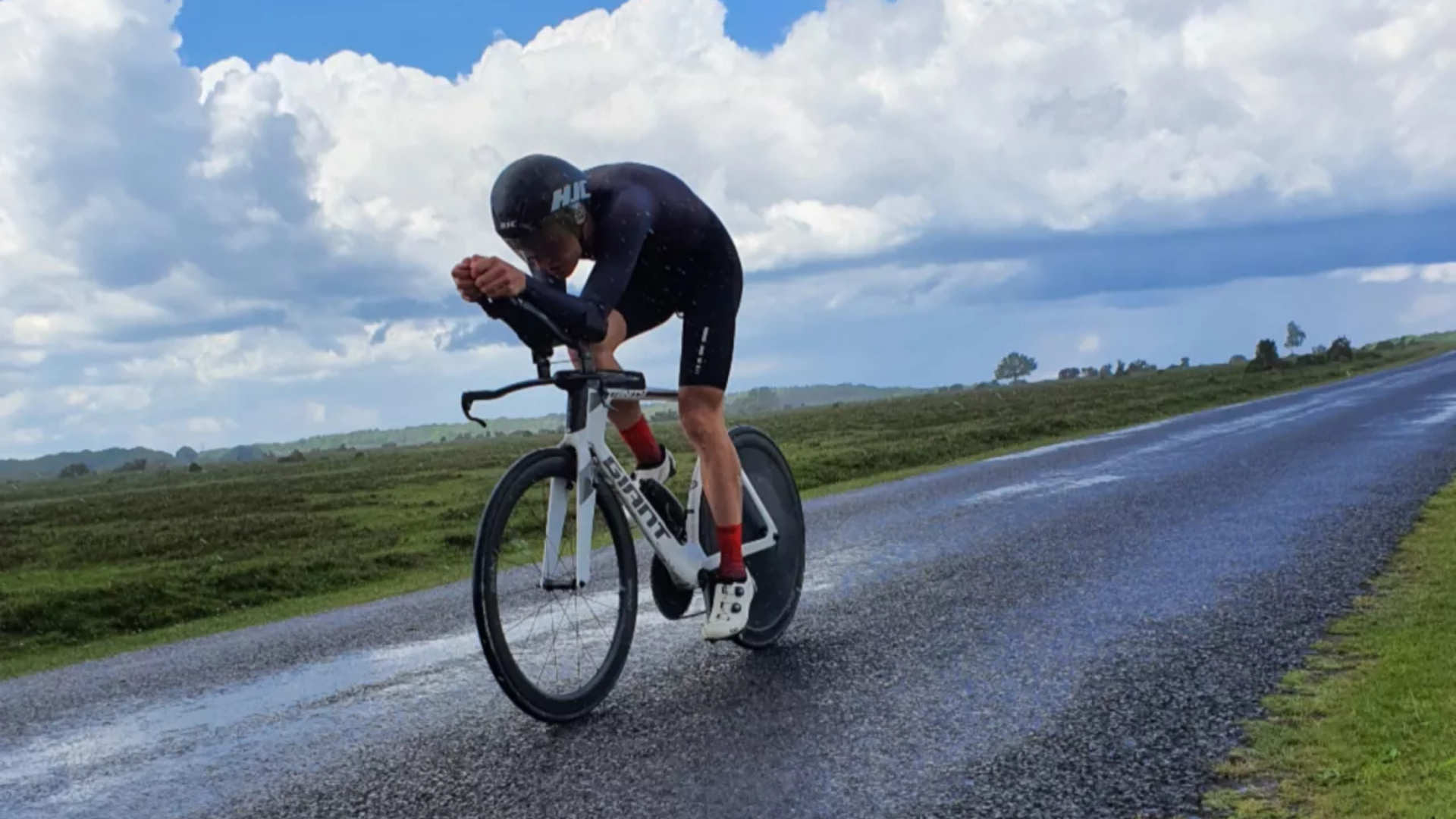
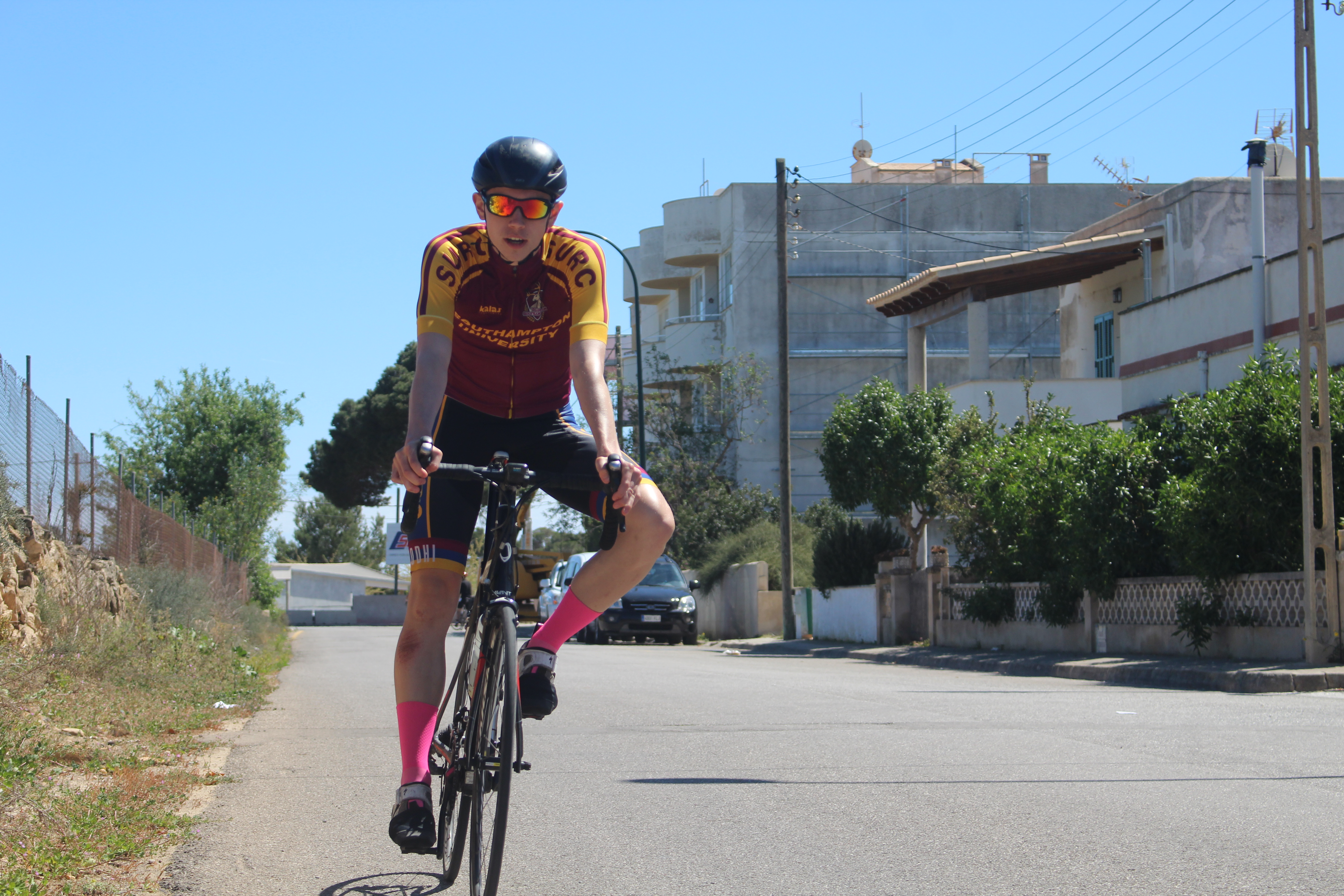
Just take a second to reflect on how much time trial helmets have change over recent years. We've seen a shift from huge, heavy and poorly ventilated aerofoils to the stubbier, lighter and more breathable designs ruling the roost today.
Alongside a good skinsuit, a helmet that fits well and provides some aerodynamic benefit is an essential part of any time trial set-up. You may not be lining up at this year's Tour de France, but an aero optimised TT helmet can help save you vital seconds against the clock.
We've got a full guide to all the best helmets that we've tested individually and also the best aero helmets for all-rounder road use, but here we have pitted four leading TT and triathlon helmets from a range of price points directly against each other.
We've got the details on the exact testing protocol down below, but in a nutshell, we used the Notio aero unit along with a power meter to get a number for the CdA (coefficient of aerodynamic drag) of each of the helmets, ridden over a 6km test course.
However - and this is a big however - please do remember when reading the results that the aero efficiency is individual, and there are many factors involved. Just because a helmet worked on our tester, it doesn't mean it'll be fast on you - and vice versa. The numbers hopefully give you an idea of each lid's performance and make for interesting data alongside other factors, such as comfort and breathability.
The helmets are ordered from fastest to slowest, so let's jump straight in with the best on test, the HJC Adwatt.
The best time trial helmets

HJC Adwatt
Our expert review:
Specifications
Reasons to buy
Reasons to avoid
This was the best time trial helmet I have ever worn by quite some distance and the aero test results speak for themselves. When viewed against the baseline road helmet it was 9% faster over the 3km distance, when ridden at 250w.
The Adwatt has a distinctly road helmet-like feel. It's comfortable, cool and light on the head. In fact, it's the lightest time trial helmet on test. Even with the visor on, it still weighs around 320g - which is highly impressive.
When it comes to that visor, it offers a great field of view and it didn’t fog up once despite being worn in a range of temperatures. I was able to confidently navigate long, twisty and fast descents - without having to move from my position on the TT bars.
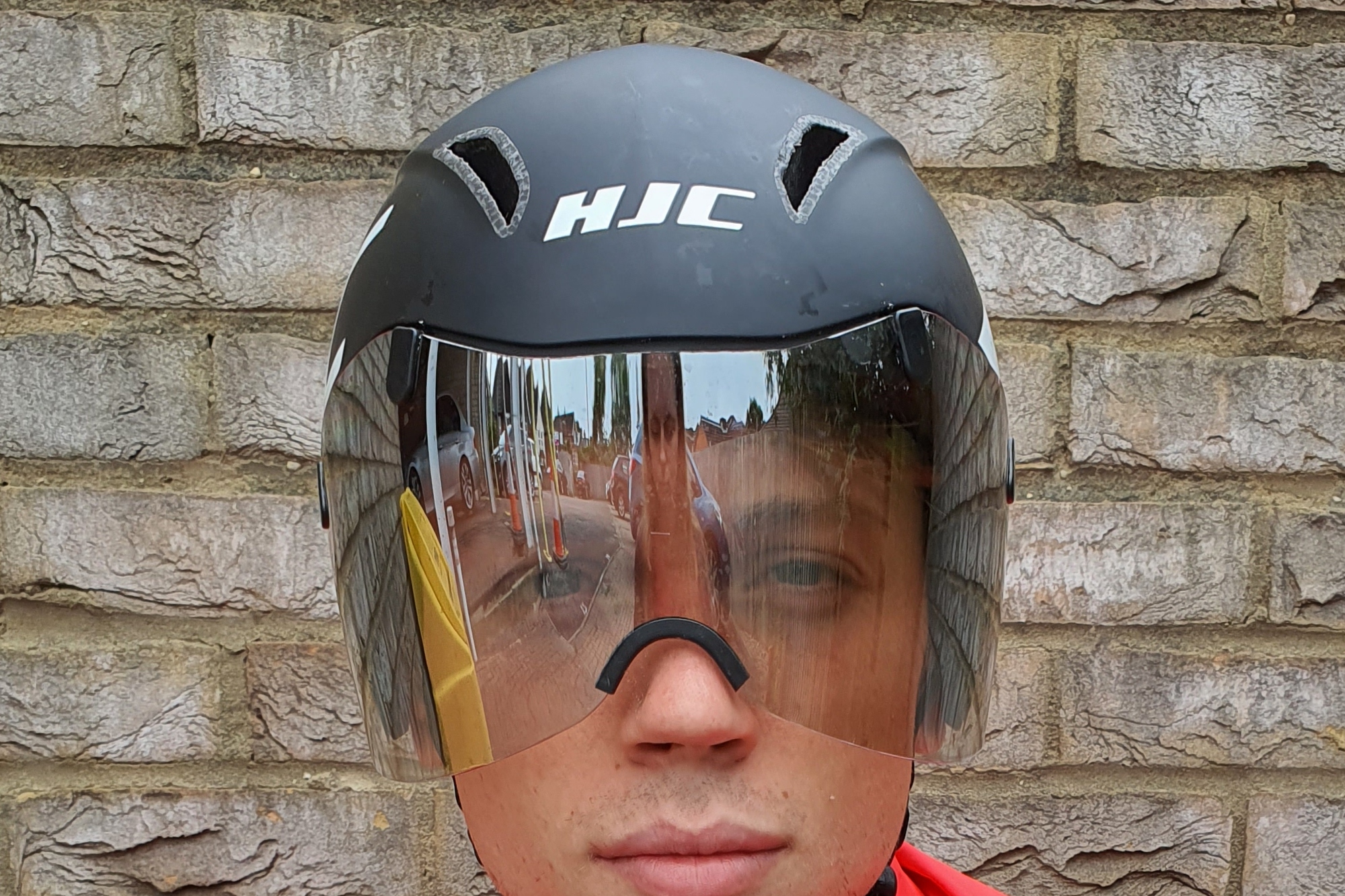
Adjusting the retention was easy and straightforward, with the Adwatt helmet always feeling securely set in place. With the shell of the helmet being cut above the ears, it feels quite spacious and more breathable than other designs. With the visor in place, your ears are still hidden from the wind, so as to maximise the aero performance.
In this respect, the HJC Adwatt is quite similar to the Giro Aerohead. However, the HJC Adwatt did test a little faster and is fractionally cheaper - and so comes top of our test.

Specifications
Reasons to buy
Reasons to avoid
The Met Codatronca is designed for riders who move their head around, with a short tail and round shape in order to reduce the penalties of sub-optimal head positioning.
The helmet is hard over the ears meaning it can feel cramped at times and I did experience some issues with the visor fogging up on one of my rides. If you live in sunnier, dryer climates than the UK this is less likely to be an issue. But those around the Pacific Northwest - or elsewhere in Northern Europe - might be better off with the Giro Aerohead or HJC Adwatt, which didn't experience such issues.
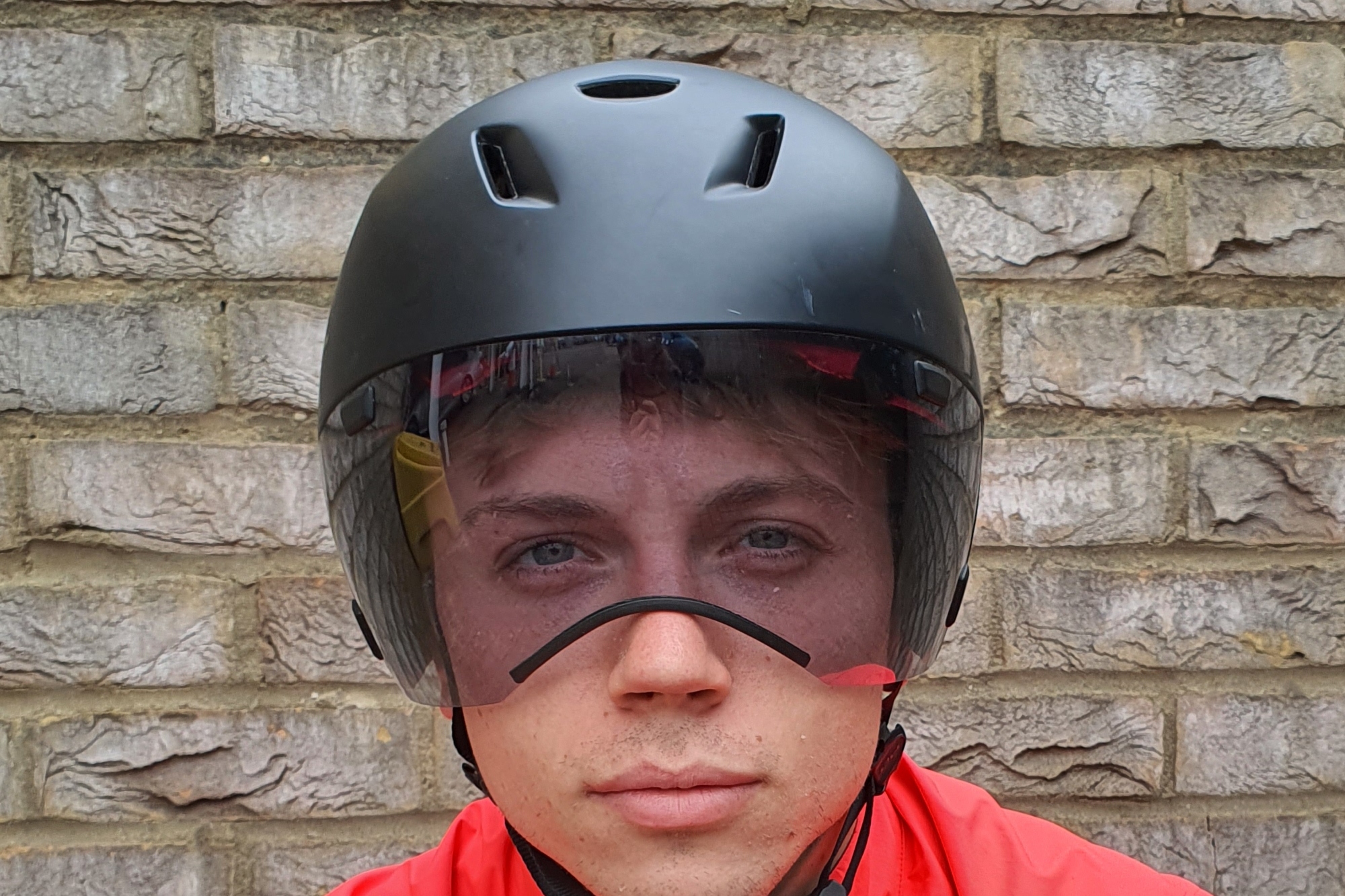
The strap fastening system is an interesting one with two interlocking magnets - potentially one to avoid if you’re looking for a speedy transition in a triathlon. However it did lead to a secure fit and has a feeling of quality when it snapped into place.
Coming in 8% faster than our baseline road helmet, the Codatronca wasn't much slower than the HJC Adwatt. The Codatronca did have those issues with feeling a little cramped and the visor fogging up, but with its particularly short tail it does make a good option for riders who find they move around a lot during and effort.
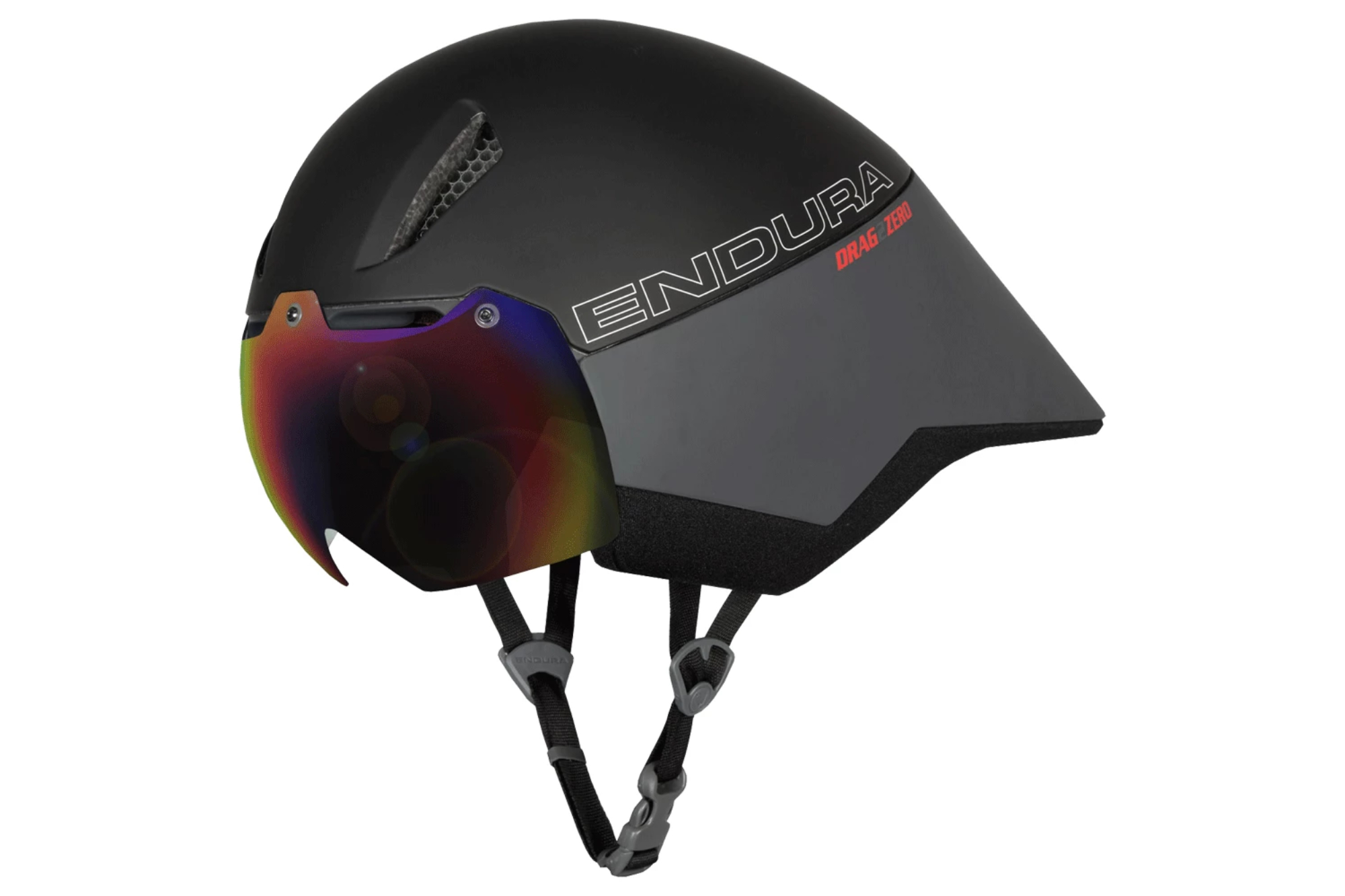
Endura D2Z Aeroswitch
Our expert review:
Specifications
Reasons to buy
Reasons to avoid
This helmet is the most interesting model on test - as it’s actually designed to be two helmets in one - it has a detachable aerodynamic fairing meaning we have both a time trial helmet and an aero road helmet..
As a road helmet, the D2Z Aeroswitch isn't bad. Thanks to the large vent, overheating wasn't an issue, even on long climbs. The range of adjustability proved fine for getting a comfortable fit - although, due to the aerodynamic fairing’s attachment points, the helmet does sit relatively high above the ears and does present somewhat of an aesthetic challenge.
But overall, I was quite happy with the D2Z Aeroswitch in its road helmet guise. With the faring on, though, it was a different story.
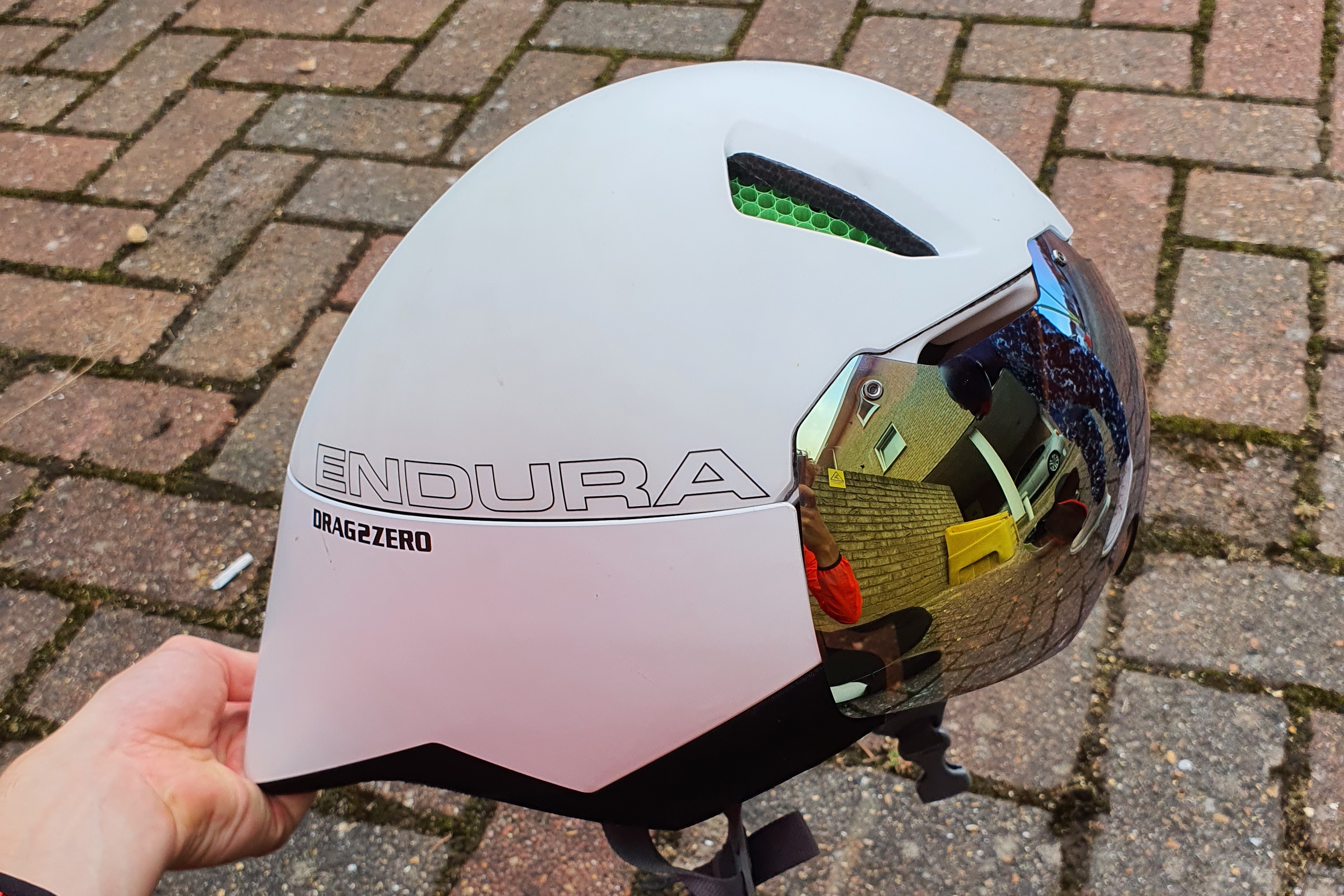
Firstly, with the shell of the helmet covering the ears (as opposed to the visor), the helmet rather cramped around the ears. The Koroyd (KSI) honeycomb-like safety feature, didn't help with its strange plasticky feeling in the vents.
Somehow, the shape the helmet manages to amplify the wind noise, making for an unpleasant bellowing when ticking along at speed. It's also a very heavy helmet - not quite twice as heavy as the HJC Adwatt, but it's not that far off.
Finally, not a criticism as such, but the tail of the helmet is quite long and provides a lot of feedback through contact with the back. For certain riders, who can hold fast in just the right position all the way through their effort, it would likely be a very fast option.
But if you know you tend to move around a lot, then going for a shorter tailed option might be better for you.
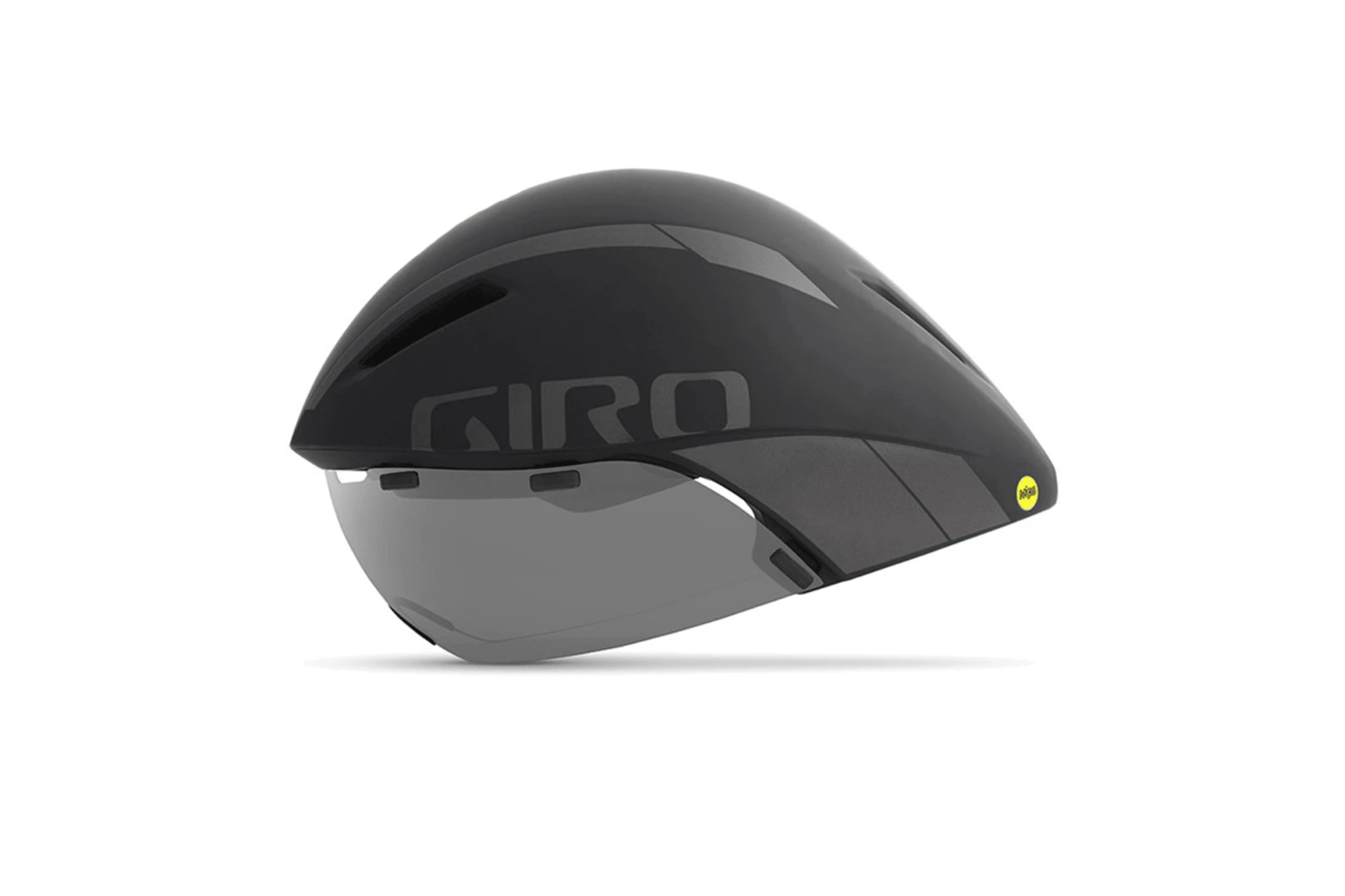
Specifications
Reasons to buy
Reasons to avoid
The Giro Aerohead is a do-it-all time trial helmet that performed solidly in aero tests across a number of positions. It proved fast both with and without the visor, whilst also providing excellent the ventilation - it didn't heat up in a way that some TT helmets can.
Unlike the Met Codatronca and the Endura D2Z Aeroswitch, the Giro Aerohead features a similar contour around the ears as the HJC Adwatt, and with the the visor being the part providing shelter from the wind. This design tends to result in a more spacious feeling fit - and that was very much the case with this Giro Aerohead.

The tail of the helmet is quite short, so there’s not so much feedback around the shoulders. If you’re a time trialist who tends to move their head around a bit, this helmet should work well for you.
Finally, although aesthetics may be (somewhat) subjective, we feel it's still worth a mention that we think this is one of the best looking TT helmets out there.
Time Trial helmets: How we test
There are two main components to a time trial helmet. These can be split broadly into speed related issues and practical ones. A time trial lid’s first function is to protect you, secondary to this is speed and then we have other issues like comfort, fogging, versatility and others.
TT helmets are a big investment, so we've strived to be as comprehensive as possible.
The helmets on test were worn for at least 200km each, as well as being subject to aerodynamic testing using a Notio aero unit to measure the CdA changes vs a baseline road helmet.
For the aero testing, we had a test pilot ride at 250W as smoothly as possible along a 3km stretch of road, then turn around and ride back. This was done twice in each TT helmet as well as in a non-aero road helmet which served as a control.
In analysing the results we looked at the speed at those 250 watts as well as the difference in CdA from the baseline measured with a Notio.
Keep in mind when interpreting these results that aerodynamics are extremely individual - just because it tests fast in one position doesn’t mean it’ll be fast for you and vice versa.
Time Trail helmets: the results
The aero tests were specific to our test pilot's, Gabe Dellar, position and this is worth remembering - these results won't necessarily be the same for all riders.
We found that the HJC and the Met tested similarly - although the HJC did test slightly faster, it was within the error margins of our experiment and therefore not statistically significant.
The Giro and Endura helmets also performed quite similarly to each other, although at a step below the HJC and Met.
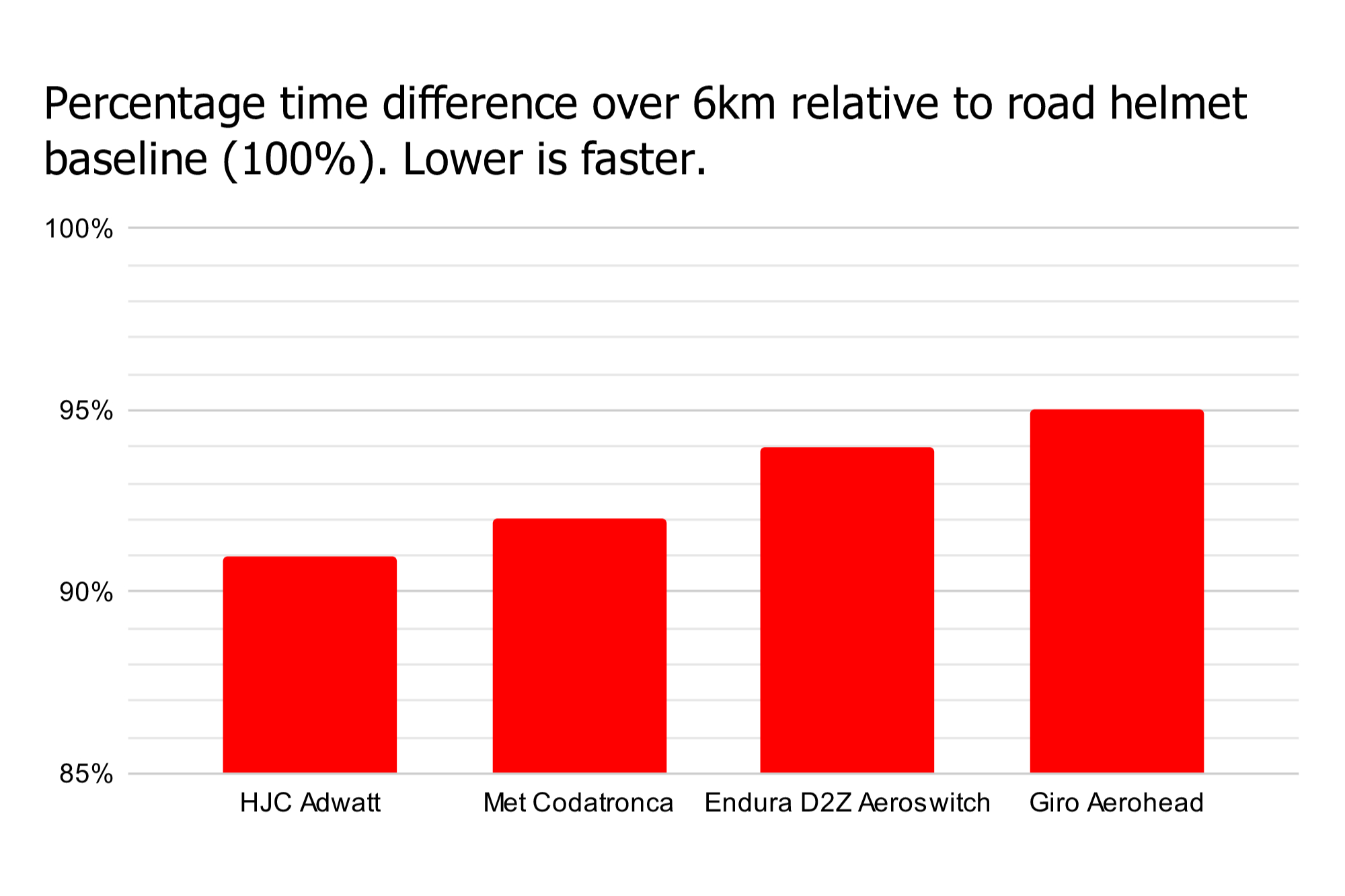
Conclusion
All of these helmets were acceptable and the test results show that there’s a marked increase in speed over the baseline road helmet that we tested. The Endura has one advantage over all of the others in that you get two helmets in one. As a road helmet isn’t the most stylish thing on earth but it is functional, safe and aero.
However, when you attach the aerodynamic fairing the helmet becomes hot and cramped around the ears.
The Giro Aerohead is a classic option that works well with and without the visor. The same can be said for the HJC though it provides a little more feedback around the shoulders with a more pronounced tail and a more road helmet like feel.
For riders who move their head around a lot, the MET is the best choice. The HJC was the best performing helmet on test for comfort and visibility both with and without the visor attached.
Get The Leadout Newsletter
The latest race content, interviews, features, reviews and expert buying guides, direct to your inbox!

Tom Epton is a freelance writer and data scientist. Originally training as a scientist after completing his studies in physics he realised that cycling was what he wanted to spend his life thinking about. Now he works with manufacturers, athletes and teams using cutting edge data science methods to find performance gains. Tom writes primarily about sport-science and tech!
-
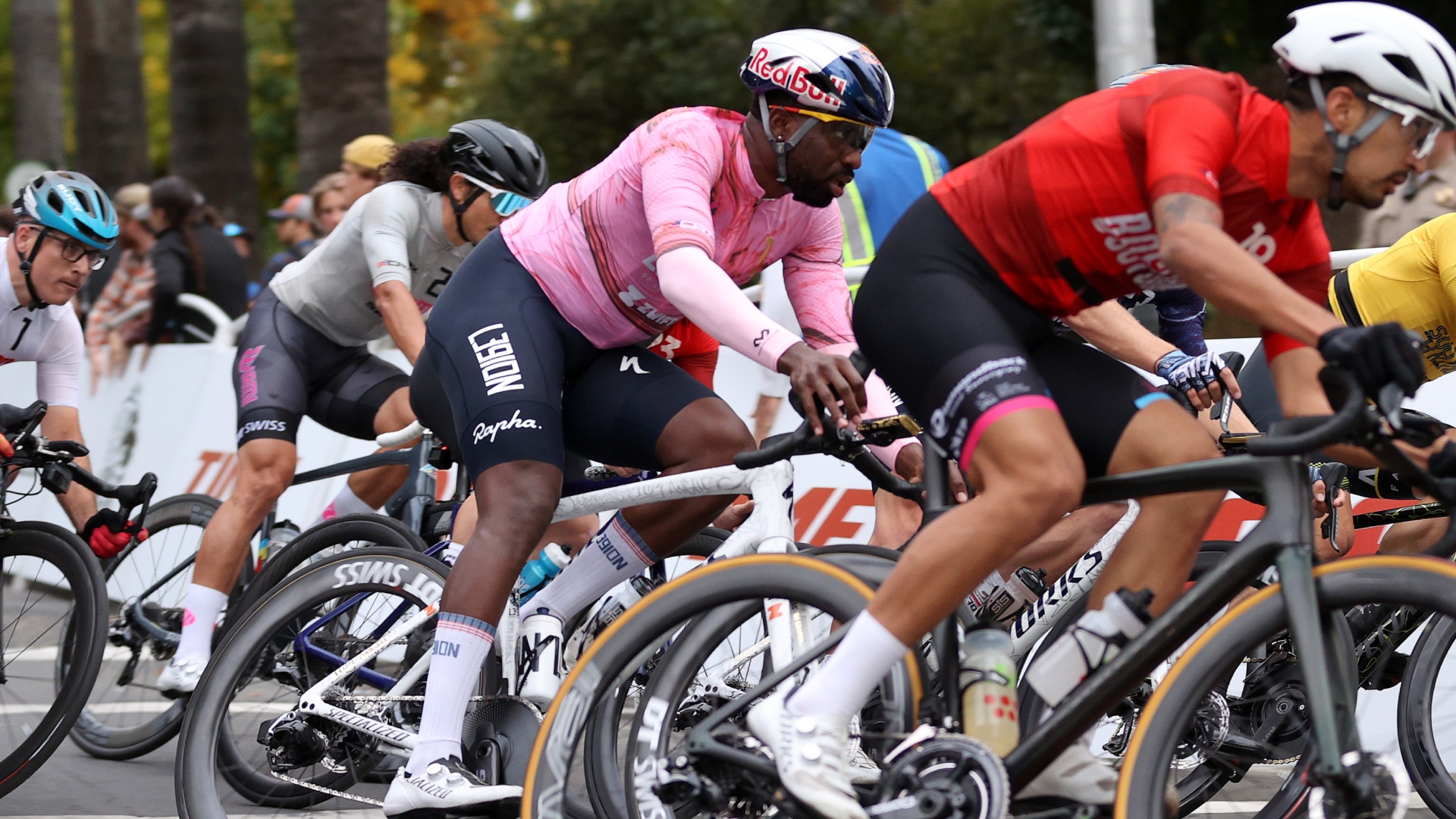 Can you make a living as an American domestic road racer? A look inside the part-time professionalism of the American road peloton
Can you make a living as an American domestic road racer? A look inside the part-time professionalism of the American road pelotonAfter decades of booms and busts, the American road scene finds itself in a fragile place. We spoke to riders to understand the reality of chasing the dream on home soil
By Logan Jones-Wilkins
-
 5 things I wish I’d known before reviewing the Swytch GO e-bike conversion kit
5 things I wish I’d known before reviewing the Swytch GO e-bike conversion kitSwytch offers an effective, albeit untidy, workaround for e–bike–curious riders. But as prices drop on full e-bikes, its value proposition may be fading
By Anne-Marije Rook